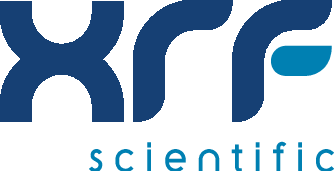Can XRF Analysis Help Drive Mineral Independence?
The race for critical minerals is redefining how countries approach their natural resources. As pressure mounts to secure domestic supplies of cobalt, rare earths, and other strategic elements, the ability to locate, process, and reuse these materials internally is no longer optional. Mineral independence has become an essential strategy for economic resilience and geopolitical stability.
X-ray fluorescence (XRF) analysis supports this goal by enabling nations to identify and manage their resources with greater speed and precision. Through rapid, accurate elemental identification, XRF analysis can streamline exploration, guide mining operations, and make recycling more viable. It doesn’t just assist in mineral development. It actively drives it forward, reducing reliance on foreign supply chains and strengthening national resource strategies.
The Role of XRF Analysis in Building Mineral Self-Sufficiency
XRF analysis is a non-destructive technique that identifies the elemental composition of a material through the measurement of fluorescent X-rays emitted after excitation. It can detect elements from sodium to uranium, works with minimal sample preparation, and delivers results in seconds. Both benchtop and portable systems make it usable in labs and on-site operations.
For nations pursuing mineral independence, these capabilities translate to faster insights, broader access, and smarter decisions across the mineral lifecycle.
How XRF Analysis Supports Mineral Independence
Faster, Smarter Exploration
Effective exploration is critical for building a domestic mineral supply. However it’s often hindered by delays and cost barriers. XRF analysis offers a practical solution. By providing real-time elemental data directly in the field, it allows geologists to quickly assess mineral potential and adjust their approach on the spot. This responsiveness enables faster development of viable deposits and empowers countries to take more control over their resource strategies. It also helps reduce early-stage exploration risks through allowing teams to evaluate targets on the spot, refine sampling plans in real time, and avoid investing in low-potential zones.
Empowering Small-Scale and Remote Mining
Achieving mineral independence requires widespread participation, including from local and artisanal miners operating in remote areas. Portable XRF analysis tools give these operators the ability to:
- Identify high-value materials at the source
- Reduce waste and improve processing yields
- Report validated data to national resource databases.
Through expanded access to analytical capabilities, XRF analysis helps integrate small-scale efforts into national mining strategies and supports the broader pursuit of mineral independence.
Improving Efficiency in Active Mines
Within mining environments, XRF analysis supports real-time decisions related to ore quality and processing. Operators use it to:
- Monitor ore grades during extraction
- Sort material for efficient processing
- Blend feedstock to meet downstream specifications.
Maximizing the value of marginal or lower-grade deposits makes domestic mining more cost-effective. This, in turn, reduces dependence on imported feedstock and directly supports the goals of mineral independence through more cost-effective and sustainable domestic production.
Strengthening National Resource Mapping
National strategies for mineral independence rely on knowing what resources exist and where. XRF analysis supports this by enabling efficient geochemical surveys across unexplored or under-mapped regions. The elemental data it generates feeds directly into national inventories and helps identify strategic development zones.
Equipping governments with fast, reliable insights into their own resource base allows for more informed planning, more focused investment, and a stronger foundation for domestic mineral security.
Advancing Circular Resource Strategies
Domestic recycling plays an important part in reducing dependence on raw imports. XRF analysis contributes to this effort by identifying valuable elements in e-waste, spent batteries, and industrial scrap. It is widely used to:
- Pinpoint key materials in recycled components
- Sort scrap for targeted recovery
- Confirm quality before reintegration into the supply chain.
Enabling more efficient recovery and reuse of materials already in circulation strengthens resource resilience and helps extend the utility of existing reserves.
XRF Analysis: A Practical Tool for Strategic Control
Reliable mineral analysis depends on accurate, consistent sample preparation. With advanced technologies such as fusion equipment and high-purity fluxes, the team at XRF Scientific ensures every stage of the analytical process, whether conducted in the field or laboratory, is optimized for dependable results. This high level of performance enables decision-makers across exploration, mining, and recycling to act with confidence. In the pursuit of mineral independence, clarity and speed are vital.
XRF analysis supports every step of the mineral independence journey. It enables faster exploration, supports efficient mining, enhances national resource planning, and strengthens recycling efforts. Each application brings countries closer to managing their own critical minerals with confidence and clarity. Looking ahead, XRF analysis offers a dependable foundation for countries aiming to develop more resilient and self-sufficient mineral strategies.




